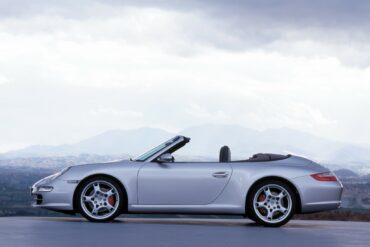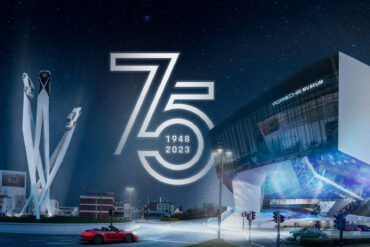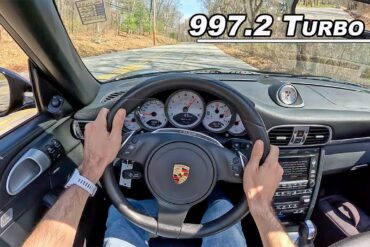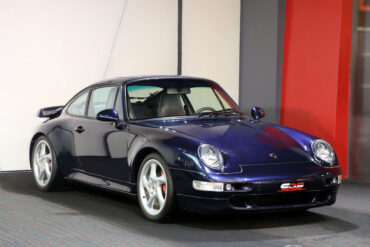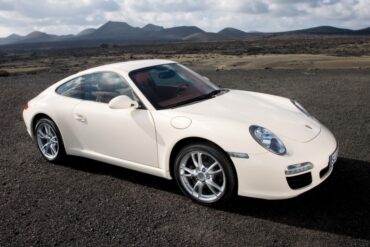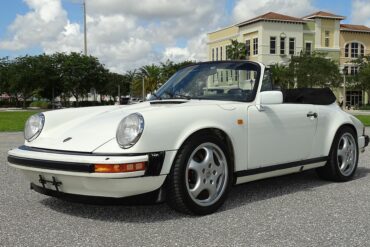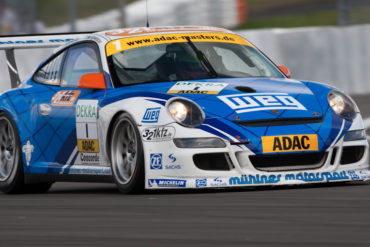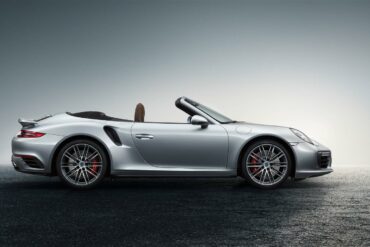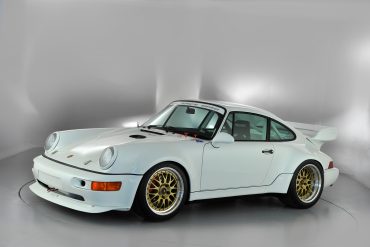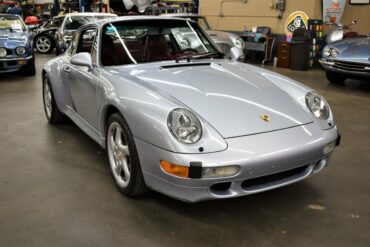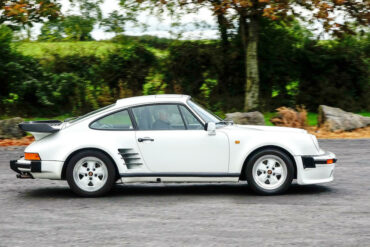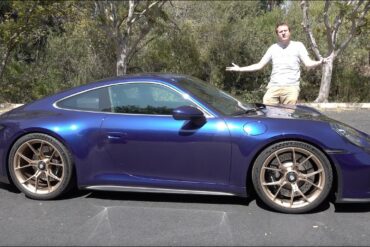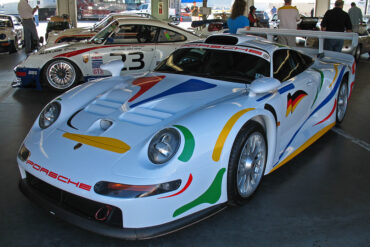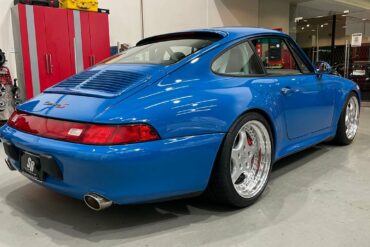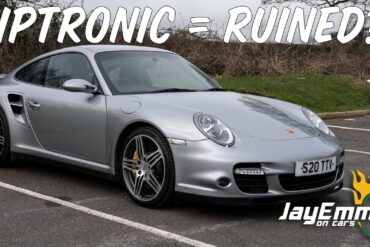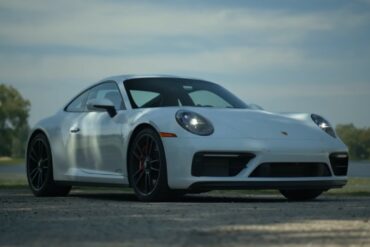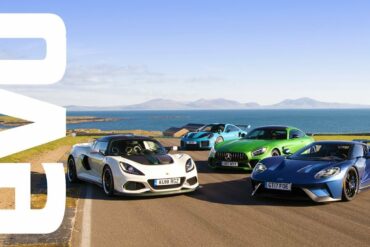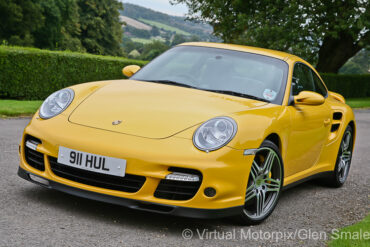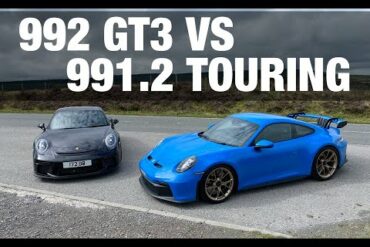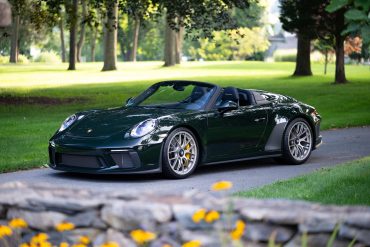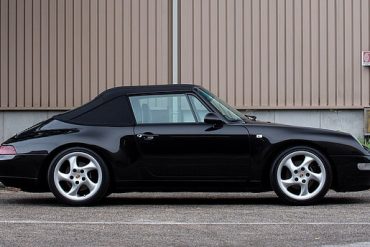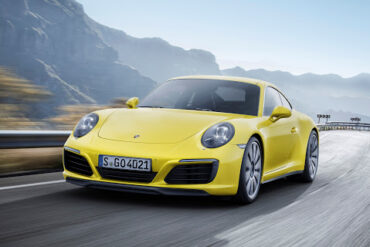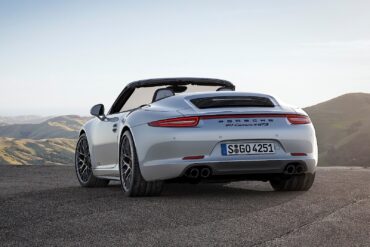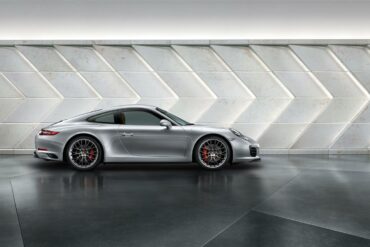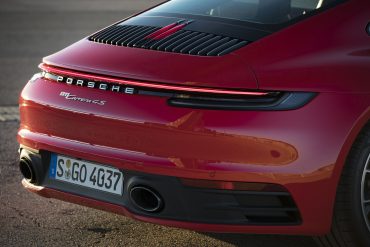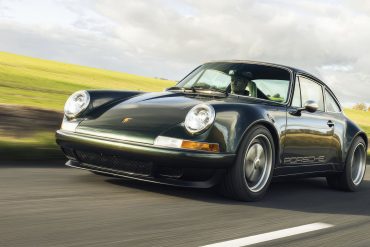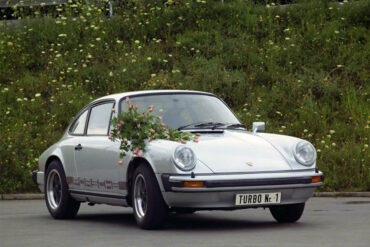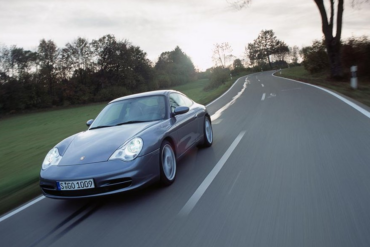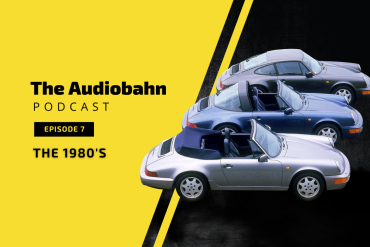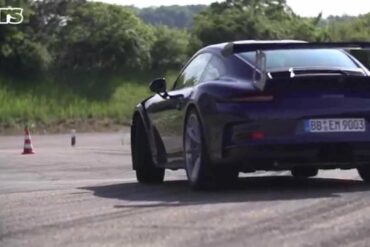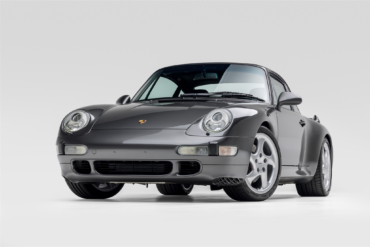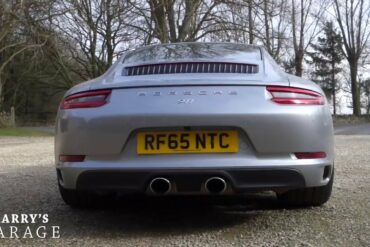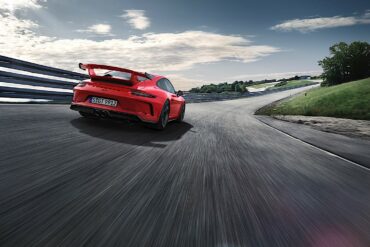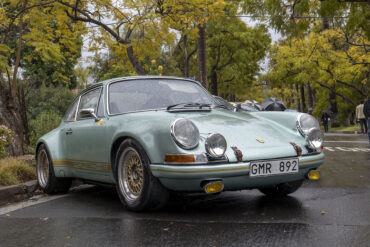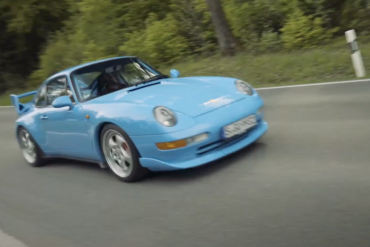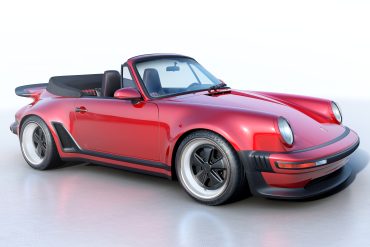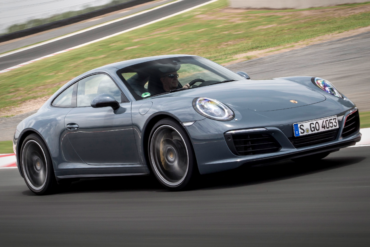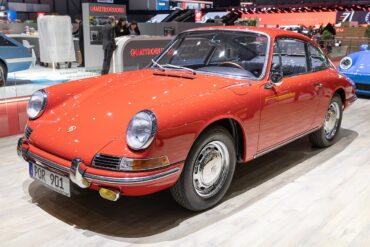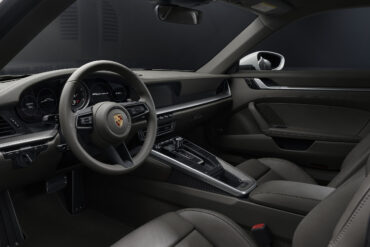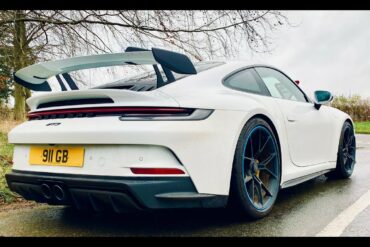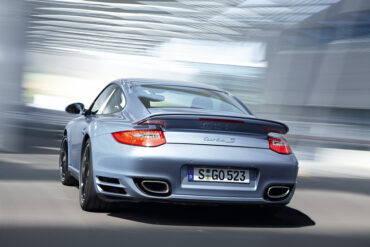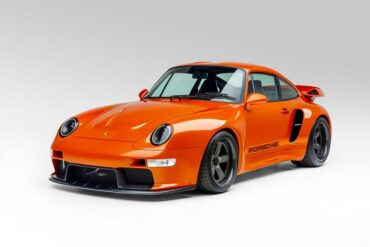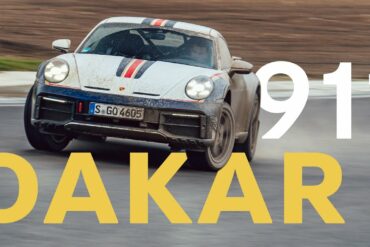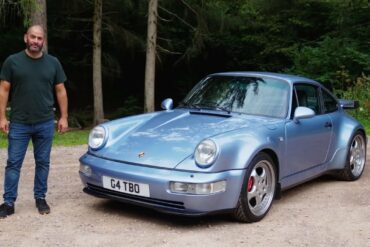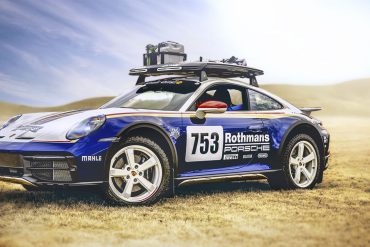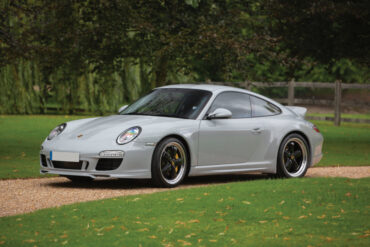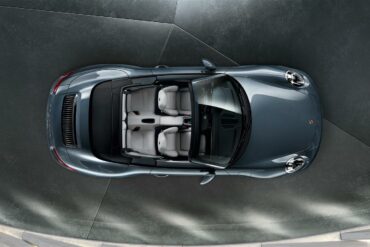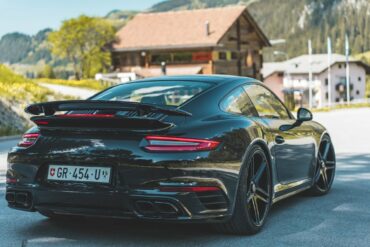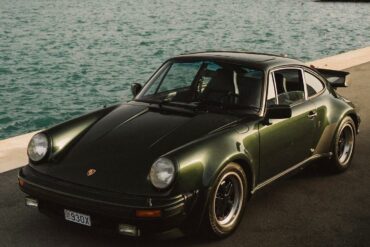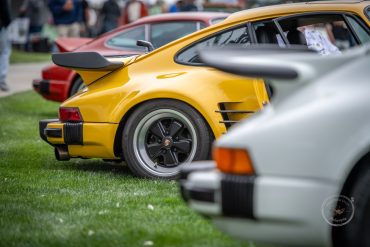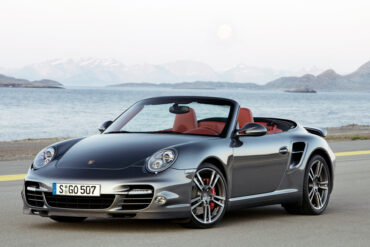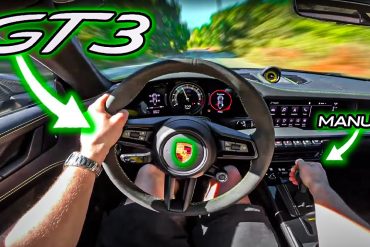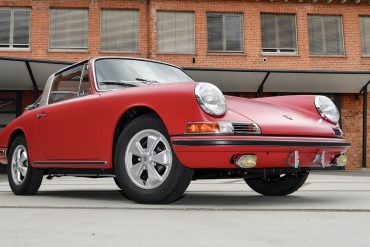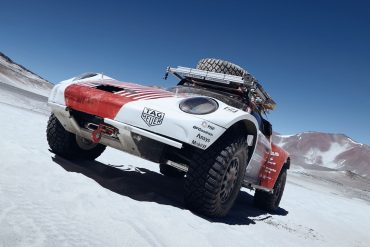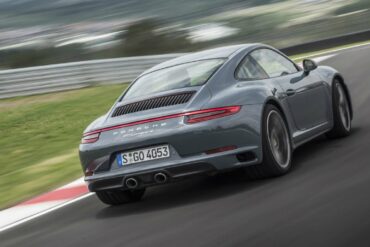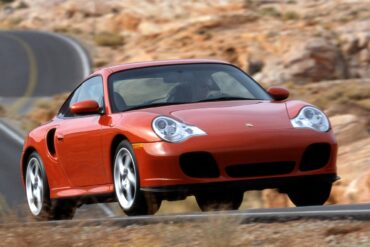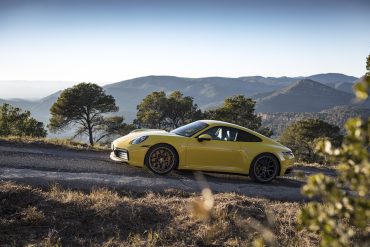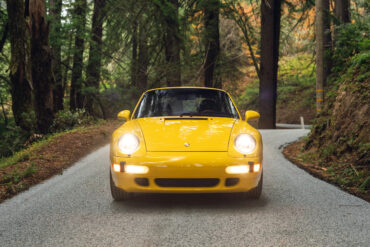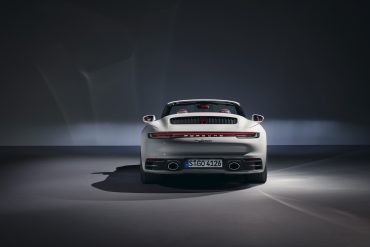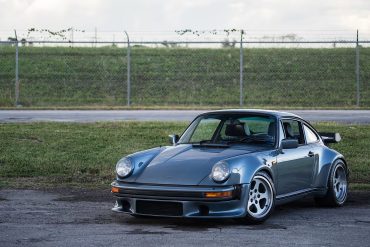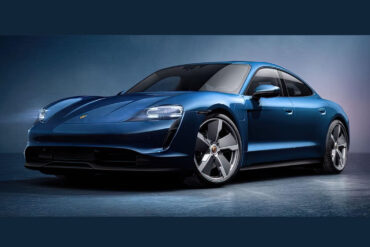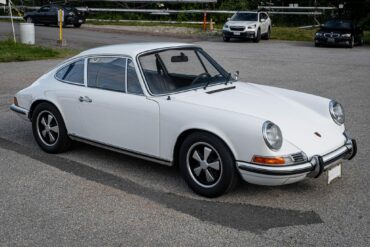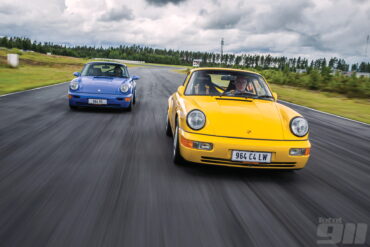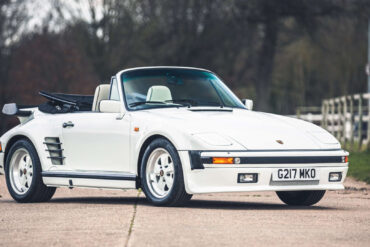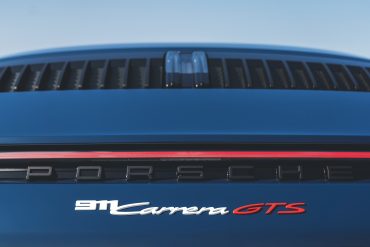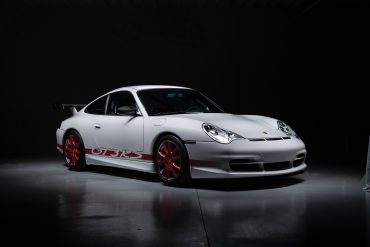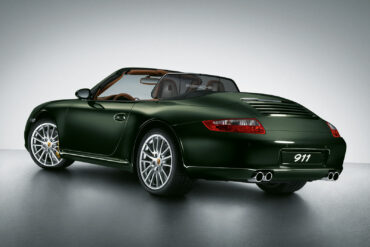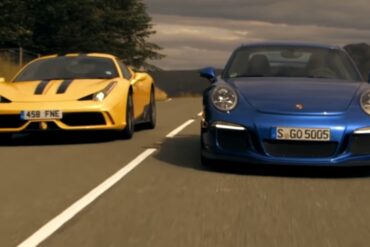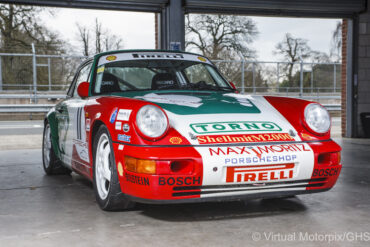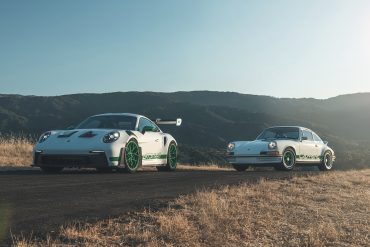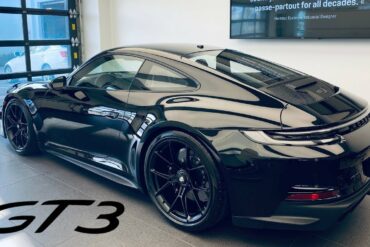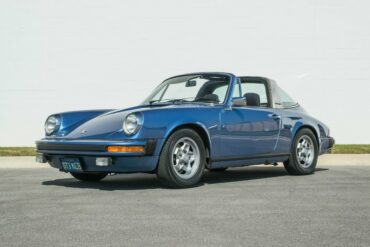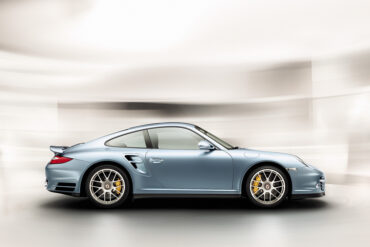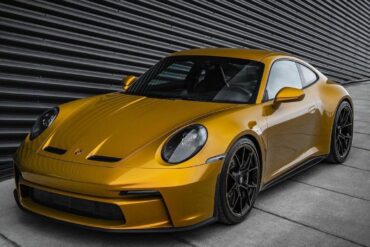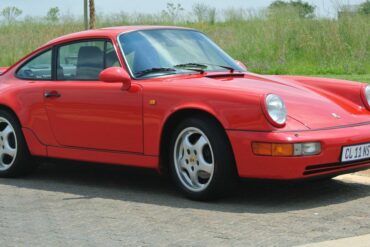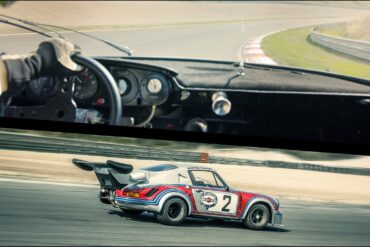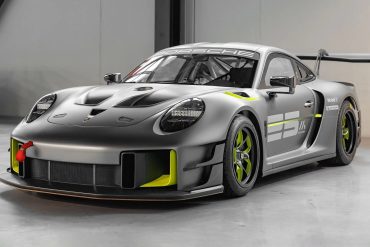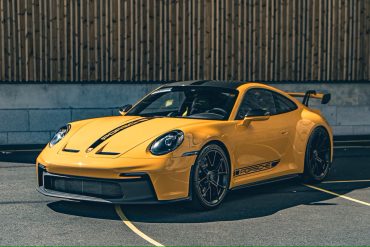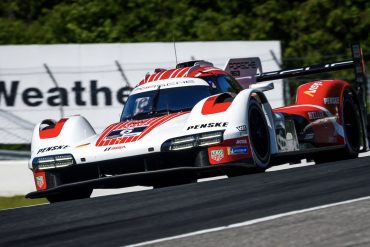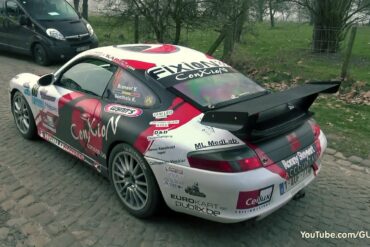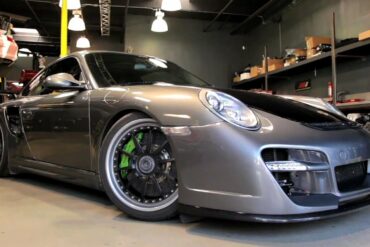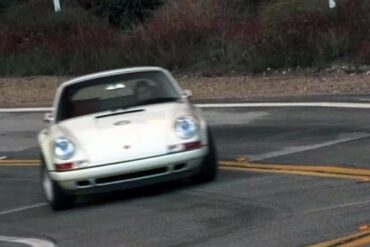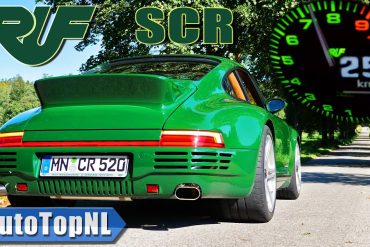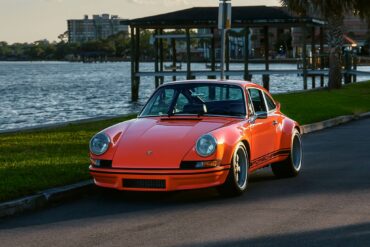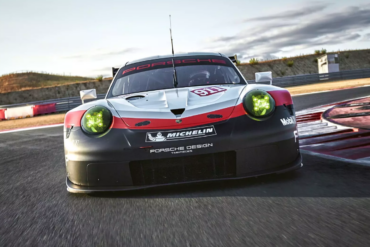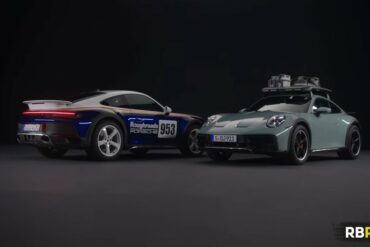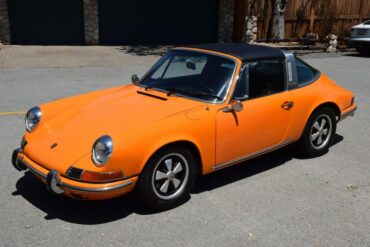2005 Porsche 911 Carrera S Cabriolet (997) Technical Specifications Engine Type Flat 6 Induction Normally-aspirated Cooling Water-cooled Valvetrain Double overhead...
Porsche 911
All
- Porsche 912
- 911 Carrera RS 2.7
- Porsche 901 (911)
- Porsche 911 (F-Series)
- Porsche 911 (991)
- Porsche 911 (G-Series)
- Porsche 911 (964)
- Porsche 911 (993)
- Porsche 911 (996)
- Porsche 911 (997)
- 911 Speedster Concept
- Porsche 911 (992)
- 964 Carrera 2
- 964 Carrera 4
- ’30 Jahre’ Anniversary
- 964 Speedster
- 964 Turbo
- 964 Carrera RS
- 964 Carrera Cup
- 964 RSR
- 993 Carrera
- 993 Carrera 4
- 911 Edition 50
- 993 Carrera 4S
- 911 2.0 Bertone Roadster
- 993 Carrera S
- 993 Targa
- 992 Sport Classic
- 993 Turbo
- 996 Carrera
- 993 Carrera RS
- 992 America Edition 911
- 996 Carrera 4
- 993 GT2
- 996 Targa
- 993 Carrera Cup
- 996 Carrera 4S
- 996 Turbo
- 996 Turbo S
- 996 GT3
- 996 GT3 RS
- 996 GT2
- 996 GT3 Cup
- 996 GT3 R
- 996 GT3 RSR
- 997 Carrera
- 996 GT3 RS Race
- 997 Carrera S
- 997 Carrera 4
- 997 Carrera 4S
- 997 Targa
- 911 Carrera 3.0 Coupe (G-Series)
- 997 Targa 4S
- 997 Turbo
- 997 Turbo S
- 997 GT2
- 992 Carrera T
- 997 GT2 RS
- 997 Speedster
- 997 Carrera GTS
- 992 Dakar
- 997 Carrera 4 GTS
- 997 GT3 Cup
- 997 GT3 R
- 997 GT3 RSR
- 997 GT3
- 997 GT3 RS
- 997 GT3 R Hybrid
- 991 Carrera
- 991 Carrera 4
- 991 Carrera S
- 991 Carrera 4S
- 991 Targa 4
- 991 Targa 4S
- 991 Turbo
- 991 Turbo S
- 991 Carrera GTS
- 991 Carrera 4 GTS
- 991 Targa 4 GTS
- 991 911 R
- Porsche 992 GT2 RS
- 991 GT3
- 991 GT3 RS
- 991 GT2 RS
- 991 Speedster
- 991 GT3 R
- 991 GT3 Cup
- 991 RSR
- 991 Carrera T
- 992 Carrera 2
- 992 Carrera 4
- 992 Carrera S
- 992 Carrera 4S
- 992 Targa 4
- 992 RSR
- 992 Targa 4S
- 992 Carrera GTS
- 992 Carrera 4 GTS
- 992 Targa 4 GTS
- 992 Turbo
- 992 GT3 R
- 992 Turbo S
- 992 GT3
- 992 GT3 Touring
- 992 911 S/T
- 911 (G-Series)
- 992 GT3 RS
- 992 GT2 RS
- 992 GT3 Cup
- 911 Carrera 3.0 (G-Series)
- 911 S (G-Series)
- 911 Carrera RSR 2.8
- 911 SC (G-Series)
- Porsche 992 GT3 R Rennsport
- 911 S/T
- 911 Carrera 3.2 (G-Series)
- 911 (Base Model)
- 911 Turbo (930)
- 911 SC Safari
- 911 L
- 911 Carrera RSR Turbo 2.1
- 911 T
- 911 Carrera RSR 3.0
- 911 E
- 911 S
- 911 SC San Remo
- 911 Carrera 3.2 Clubsport
- 911 R
- Porsche 953
- 911 Carrera RS 3.0
- 911 T/R
- 911 Carrera 25th Anniversary
- 911 SC RS
- 911 Turbo LE
- 911 Carrera Commemorative
- 911 Carrera 2.7 (G-Series)
- 911 3.2 Speedster
- 911 Turbo 2.7
- 964 Turbo S
I have watched a lot of supercar videos on Youtube in my time and this one may be my favorite....
Carwow’s YouTube channel hosted yet another interesting drag race involving three cars from different classes. First up was the Porsche...
The Prequel Let’s be honest, there has been much to absorb lately in the “Porsche Sphere.” Leading up to this...
Nick Murray goes behind the wheels of the 992 generation Porsche Turbo S to see if the fastest 911 is...
The convertible version of a performance car is often debated as unnecessary by some people, citing the reduction in structural...
Porsche 993 VIN Numbers Below is our detailed explanation of the 993 VIN codes. Our easy to use guide should...
Porsche Option Codes – Porsche 911 (2009 Model Year) GT3/Turbo/GT2, Coupé/Cabriolet Looking to decode your 2009 Porsche 911 option codes?...
The Edmunds U-Drag is a unique competition that tests the overall performance capabilities of vehicles. In this racing series, Edmunds...
After producing no convertibles for 18 years, Porsche launched the 911 SC Cabrio in the spring 1983. The top made extensive...
2009 Porsche 911 GT3 Cup S (997) Technical Specifications Type Racing Car Built at Weissach, Germany Engine Boxer-6 w/Dry Sump Lubrication Displacement...
2017 – 2019 Porsche 911 Turbo Cabriolet (991.2) Pictures & Gallery ...
Every so often, Porsche creates a short production run of cars that celebrates the attributes of one of their special...
Road Test in a Porsche 911/993 4S Coupe Polar Silver metallic, Flamenco Red leather interior, Red carpeting, 3.6 Liter Flat 6-cylinder...
1989 Porsche 911 Turbo LE Pictures & Gallery...
The new GT3 Touring Review 2022 Porsche 911 GT3 Touring review! The new GT3 Touring is absolutely the GT3 I...
1996 Porsche 911 GT1 Straßenversion Technical Specifications Type Concept / Prototype Car Built At Germany Production 2 Engine All Aluminum,...
A Modern Take On A Timeless Carrera Welcome back to one of SR Auto Group’s first episodes on refreshing a...
Greatest Porsche GTs – The Ultimate Head to Head Porsche has been making GT cars for 20 years, and its...
Join Mark and Jack as they discuss the details about the Porsche 911 (992) GTS, a great alternative to the...
Ultimate Track Test Road Racers. Ford GT, Porsche 911 GT2 RS, AMG GT R and Lotus Exige Cup 430 –...
In the realm of automotive innovation, the boundaries between dreams and reality blur as California-based design studio Oil Stain Lab...
PistonHeads Compares Two Great Sports Cars The new Porsche 911 has grown in size and is heavier than ever. So...
Inspiration for this feature came from the post published by Porsche in December 2020. It covers the seven generations of...
Old vs New GT3 Showdown Great hands-on review and comparison between two of our favorite 911s. A Porsche 911 992...
The 2019 Porsche 911 Speedster is the beneficiary of Stuttgart’s latest fixings, while also serving as a throwback to the...
2,500 cabriolets were made in the 993 Carrera 4. The 993 Carrera 4, sold between 1995 and 1998, uses the same powerplant as the standard 993 Carrera, but puts power down to all four wheels through a 6-speed manual transmission. A “Carrera 4” badge on the tail, along with silver-painted brake calipers and clear front and side turn signals, help distinguish the all-wheel drive C4 from the C2 sibling.
Porsche Option Codes – Porsche 911 (2017 Model Year) Looking to decode your 2017 Porsche 911 option codes? Want to...
2015 – 2016 Porsche 911 Carrera 4 GTS Cabriolet (991) Pictures & Gallery ...
2016 Porsche 911 Carrera S Coupe (991.2) Technical Specifications Engine Engine layout Rear Engine Engine type Boxer, twin-turbo Cylinders 6 Valves...
Porsche unveils a high-performance hybrid version of their iconic 911. This new GTS T-Hybrid prioritizes power over electric-only driving unlike...
2021 Porsche 911 Carrera 4S Coupe (992) Technical Specifications PDK 992 Carrera S Specs Model 992 911 Carrera 4S Engine Engine...
Theon Design has revealed its latest bespoke Porsche 911 (964), its second for a UK customer. Finished in classic Oak...
The first road-going 911 Turbo was not the familiar 930 that entered production in February 1975. Nor was it the engine-less prototype that had appeared at the Paris Motor Show in October 1973. Instead, it was a one-off narrow-bodied mule that was subsequently gifted to Ferry Porsche’s sister, Louise, on her 70th birthday in August 1974. Built on chassis 9115600042, this 2.7 Carrera Turbo also pre-dated the prototype 930 that was shown in almost production-ready at Frankfurt show in 1974.
2004 Porsche 911 Carrera Coupe (996.2) Technical Specifications Engine Type Flat 6 Induction Normally-aspirated Cooling Water-cooled Valvetrain Double overhead camshafts...
The Audiobahn E7: Porsche in the 80s Welcome to The Audiobahn, the Stuttcars.com podcast focused on all things Porsche. In our...
Porsche 991 GT3 RS on road and track The latest generation of GT3 RS, the 991. Lighter than a GT3,...
Bring A Trailer is currently offering a gorgeous example of a 1997 Porsche 911 Turbo, one of the marque’s final...
Harry’s Garage 991.2 Carrera S Review The new 911 991.2 Carrera S is powered by a new twin-turbo 3.0 litre...
2019 Porsche 911 GT3 (991.2) Technical Specifications Engine Engine Type Aluminium horizontally opposed and naturally aspirated engine Cylinders 6 Displacement 3,996...
Follow Petrolicious into the heartland of America as we pay a visit to Indiana to meet Matt Euson and his...
The classic Porsche “Faithful” did not waiver Not since 1989 did Los Angeles have an official “Blizzard Warning” issued by...
I have always been a big fan of Ben Barry and his reviews, so it was nice to stumble upon...
California-based luxury specialist Singer just released their first reimagined Porsche 911 (Type 964) Cabriolet. After getting some requests from owners,...
2017 Porsche 911 Carrera 4 Coupe (991.2) Technical Specifications Engine layout Rear Engine Engine type Boxer, twin-turbo Cylinders 6 Valves per...
1963 – 1964 Porsche 901 Technical Specifications Built At Germany Body Stylist Ferdinand Engine Flat-6 Position Rear, Longitudinal Aspiration Natural...
The GT3 RS race cars, modeled after the 911 GT3 R, incorporated various technical enhancements to ensure optimal competitiveness on...
2022 Porsche 911 Carrera 4 Cabriolet (992) Technical Specifications Engine layout Rear Engine Engine type Boxer, twin-turbo Cylinders 6 Valves per...
It’s great on track but what’s it like to live with on UK roads? Porsche 911 992 GT3 Review!!! We...
2012 Porsche 911 Turbo S (997) Technical Specifications Engine Type Flat 6 Induction Twin-turbocharged Cooling Water-cooled Valvetrain Double overhead camshafts Injection...
Stunning Porsche 993 ‘GT2 RS’ by Guntherwerks Gunther Werks, the company that remasters the Porsche air-cooled 993 just announced their...
Get ready to witness the Porsche 911 like you’ve never seen it before! Introducing the Dakar, an off-road focused sports...
Jenson Button’s Porsche 964 Turbo 3.6 For Sale The Porsche 911 Turbo 3.6 is a rare modern classic supercar, and...
Porsche 911 Turbo S – The Supermarket Supercar Henry Catchpole of Carfection calls the Porsche 911 Turbo S (992) the...
Mad Max meets Burning Man A little over two decades ago, a bunch of off-roading enthusiasts decided to create the...
2010 Porsche 911 Sport Classic (997) Technical Specifications Engine Type Flat 6 Induction Normally-aspirated Cooling Water-cooled Valvetrain Double overhead camshafts Injection Direct...
2018 Porsche 911 Carrera Cabriolet (991.2) Technical Specifications Engine Engine layout Rear Engine Engine type Boxer, twin-turbo Cylinders 6 Valves per...
Tuned 911 Turbo S On the Road I am a big fan of the Cars With Luke channel and in...
The 930 Turbo with its 3.0 L turbocharged flat 6 was the fastest production car in the world at the...
The 9th annual Werks Reunion Monterey, held by the Porsche Club of America, took place for the second year in...
The 997.2 Turbo was introduced for the 2010 model year and received a new 3.8 litre engine capable of 493 horsepower, a significant evolution as compared to the 473hp in the 997.1 Turbo. The 997.2 Turbo was available in both manual and automatic transmissions, but the automatic evolved from the Tiptronic used in its predecessor, to a sportier dual-clutch PDK. Approximately 3,300 coupes were produced and 1,800 cabrios, far less than its predecessor. An epic all-around GT with more performance than you could ever need.
Car enthusiasts often argue that manual gearboxes make for better driving experiences, yet modern automatics are incredibly efficient and swift...
They might have access to original bodywork methods, tools, parts and the company archive. But the most valuable thing is...
22,093 feet above sea level– no car has ever gone higher. On December 2, 2023, racing driver Romain Dumas set...
2016 Porsche 911 Carrera 4 Coupe (991.2) Technical Specifications Engine layout Rear Engine Engine type Boxer, twin-turbo Cylinders 6 Valves per...
2002 Porsche 911 Turbo (996) Technical Specifications Engine Type Flat 6 Induction Twin-turbocharged Cooling Water-cooled Valvetrain Double overhead camshafts Injection...
2020 Porsche 911 Carrera 4S Coupe (992) Technical Specifications PDK 992 Carrera S Specs Model 992 911 Carrera 4S Engine Engine...
This 1996 Porsche 993 Turbo has a Paint to Sample Ferrari Giallo (yellow) finish matched with Black Supple Leather interior....
2022 Porsche 911 Carrera Cabriolet (992) Technical Specifications Model 911 Carrera Cabriolet Engine Engine layout Rear Engine Engine type Boxer,...
In the mid-1980s, RUF-manufactured Porsches stood out as some of the swiftest cars globally. In top-speed assessments by “Road &...
Porsche has announced the additions and removals of colors for Paint-to-Sample. Here is the list for the 911 and 718....
1970 – 1971 Porsche 911 E Coupe 2.2 (LWB) Technical Specifications Induction Normally-aspirated Cooling Air/oil-cooled Valvetrain Single overhead camshaft Injection...
Rare & Special Race Versions of the 964 For issue 131 of Total 911, you may remember that we made...
Just 50 ‘C16’ cars were manufactured for the UK-market, initially equipped with an uprated engine of 330bhp (from 300) mated to a 4-speed transmission. However, at the end of 1988, the uprated 5-Speed G50 gearbox was introduced, dramatically easing the peaks in power delivery by reducing the effects of ‘turbo-lag’. The factory SE also benefited from a dual-exit exhaust system, limited-slip differential, heated front seats and a sunroof.
2023 Porsche 911 Carrera GTS Cabriolet America (992) Technical Specifications Model 911 Carrera GTS Cabriolet America Design and cylinders Twin-turbo boxer...
The 2004 Porsche 911 GT3 RS serves as a homologation model, designed to comply with the new international GT rules...
2008 Porsche 911 Carrera Cabriolet (997) Technical Specifications Engine Type Flat 6 Induction Normally-aspirated Cooling Water-cooled Valvetrain Double overhead camshafts...
Our guys from the CAR magazine decided to pit the Ferrari 458 Speciale and Porsche 911 GT3 against each other...
Introduced in 1989 (the year of the 911’s 25th anniversary), the 964 Carrera 4 was a significant new model for the company, but the 4-wheel drive system was deemed unsuitable for the company’s racing series. Manufactured alongside the Carrera 4 at the same time was the more traditional rear-wheel drive Carrera 2, but this model’s launch was only planned for a year later, in the hope that it would not detract from potential sales of the Carrera 4. The 1990 season was the first season that saw the 911-based model become the pillar on which the Porsche Carrera Cup series has been established.
Tribute to the 2.7 RS Porsche 911 GT3 RS (992) Pictures & Gallery ...
This very special car has been hand-crafted by KAMM engineers using an original short-wheelbase 1966 Porsche sourced from the USA....
The incredible 2022 Porsche 911 GT3 Touring! Congratulations to the owner of this very special car! In this video the...
Porsche Option Codes – Porsche 911 (1974 Model Year) Looking to decode your 1974 Porsche 911 option codes? Want to...
2011 Porsche 911 Turbo S (997.2) Technical Specifications Engine Type Flat 6 Induction Twin-turbocharged Cooling Water-cooled Valvetrain Double overhead camshafts Injection...
This 992 GT3 Touring comes with the Explosive Gold Chromaflair custom paint job which costs $100,000. That’s equivalent of a...
1990 Porsche 911 Carrera 2 Coupe (964) Technical Specifications Engine Type Flat 6 Induction Normally-aspirated Cooling Air/oil-cooled Valvetrain Single overhead...
Best On Track POV Video I’ve Ever Seen This Porsche 911 Carrera RSR being hammered on-track is the stuff of...
For all track enthusiasts out there, you might want to check out this year’s Monterey Car Week where a compelling...
A beautiful and low mileage example of a 2022 Porsche 911 GT3 Clubsport is currently available for auction on Collecting...
Lack of speed in Qualifying Works driver Felipe Nasr has qualified in fifth for round six of the IMSA WeatherTech...
Porsche 996 GT3 Rally Flat 6 Goodness Here is another great video from the Rally of Haspengouw 2013: a Porsche...
Tuned Porsche 997 Turbo S Review TUNED visits BBi Autosport in Huntington Beach, CA to drive their new Porsche 997...
To some people, mainly Porsche people, this is the most desirable car you could own. Singer comprises a bunch of...
In this video from AutoTopNL, we get to see and hear a RUF SCR 4.0 being pushed to its limits...
996 Carrera Depreciation and Buying Guide Buying a Porsche 911 996? Then this is the video to watch. In this depreciation...
This 1977 Porsche 911S is a stunning RSR-inspired custom build by by Zurlinden Gruppe in Monterey, California. During the restoration,...
Porsche 911 RSR (991) (2017-2019) – Pictures & Gallery...
Introducing the new off-road rally sports car which will be limited to only 2,500 examples, the Porsche 911 Dakar....
1970 – 1971 Porsche 911 T Targa 2.2 (LWB) Technical Specifications Induction Normally-aspirated Cooling Air/oil-cooled Valvetrain Single overhead camshaft Injection...


